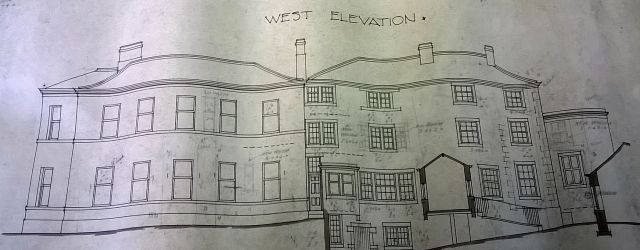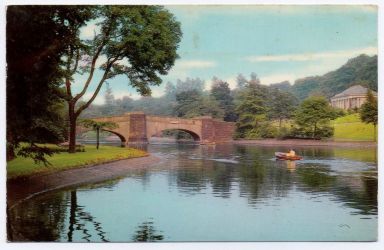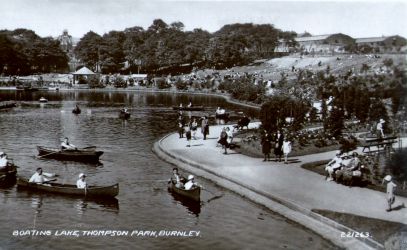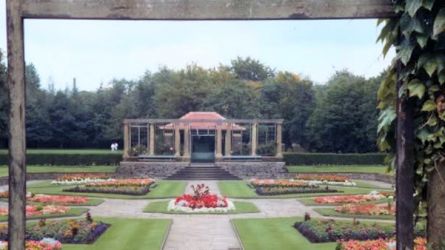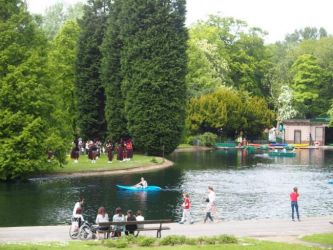2016 HISTORIC RESEARCH AND COMMUNITY ENGAGEMENT
TO SUPPORT CONSERVATION PLAN (HLF RESTORATION)
OVERVIEW:
Thompson Park, Burnley opened in 1930 thanks to a bequest made 10 years earlier by a local businessman, James Witham Thompson. It was hoped that as well as providing “green lungs” for the newly industrialised town of Burnley, Thompson Park might provide a rival attraction to the seaside resort of Blackpool, where thousands of factory workers from Lancashire and Yorkshire would migrate during Wakes Week. Indeed, there are many striking points of comparison between Blackpool’s premier park, Stanley Park, and Burnley’s Thompson Park.
In its heyday, Thompson Park boasted a boating lake, children’s paddling pool, Italian sunken gardens, 5,000 new trees, rose gardens with over 150 named varieties, a pavilion café, keeper’s lodge, aviary, glasshouses and ornamental lily pond. An open air school, Bank Hall, and a maternity hospital were also located within the bounds of the park. The River Brun had to be diverted to allow for landscaping of the park, which contains other listed features such as the McKenzie Memorial (1931) and Sandyholme Aqueduct (1796).
The restoration of Thompson Park would see the landscaping and gardens returned as closely as possible to the original plans, and rundown features such as the café, paddling pool and boathouse would be restored, while preserving original features within.
Detailed historical research was required to assist the landscape architects in restoring to their original design, the Italian gardens and columns. Community consultation would be needed to ensure that the use and role of the park for local residents was included in the final vision.
The restoration project is now entering the construction phase and works commenced in January 2018.
COMMISSIONING:
The construction of Thompson Park had been a huge undertaking and had been well documented at the time, through photography, newspaper articles, local tradesmen’s records, and the minutes of various council committee meetings. The inclusion of Bank Hall open air school and maternity hospital provided an interesting insight into the health of Burnley’s population at the time, as well as the measures for improvement taken by the Burnley Corporation and its local eminent GP/cardiologist James MacKenzie, whose memorial stands in the rose garden.
Thompson Park had seen some changes since its construction, including demolition of some buildings, including the school and hospital, and the removal of columns from the Italian gardens, as well as the addition of a light miniature railway, and the planting of a community orchard and other trees during the Forest of Burnley scheme. The Park was always well kept, achieving Green Flag status 12 years running from 1999, and was much loved and used by local people and visitors alike, with events such as Ranger Days welcoming thousands of visitors.
Nonetheless, the time was ripe for renovation. The former café pavilion had become run-down, the park furniture and boat house were in need of refurbishment. The landscaping and planting needed refreshing and the Italian gardens deserved to be restored, complete with columns. There was a need too, to reconnect visitors with the history of the park, through heritage events and activities.
There was a wealth of material relating to all these aspects of the Park, and it was a pleasure to sift through the Preston archives office, the British Newspaper Archive, the NorthWest Film Archive, a dedicated website for open air schools, builders’ plans for extensions of the maternity hospital and Bank Hall school, as well as glass photographic slides of the latter.
Research, scoping work and community consultation took place during 2016-2107. The restoration project gets under way in January 2018
CONSULTANT ROLE:
Historical research – provide plans, documents and photographs from county and local archives, newspaper archives, local history and heritage groups to inform the restoration plans.
Provide content for a small exhibition open to the public during Family Fun Day.
Work with a local college to provide historical notes for a millinery design project inspired by the opening of the park in 1930.
Guided tour for Civic Trust to explain progress and plans of the bid.
Community Engagement – canvassing visitor views and oral history interviews during Family Fun Day.
Liaise with landscape architects TGP, Hyndburn Borough Council, and other partners.
Provide heritage report and statement of historical significance for round 2 of HLF funding.
LINKS:
To read about the project on Burnley Council’s own website – click here
Click here for a video about the project.
To read the Lancashire Telegraph’s online article, click here.

